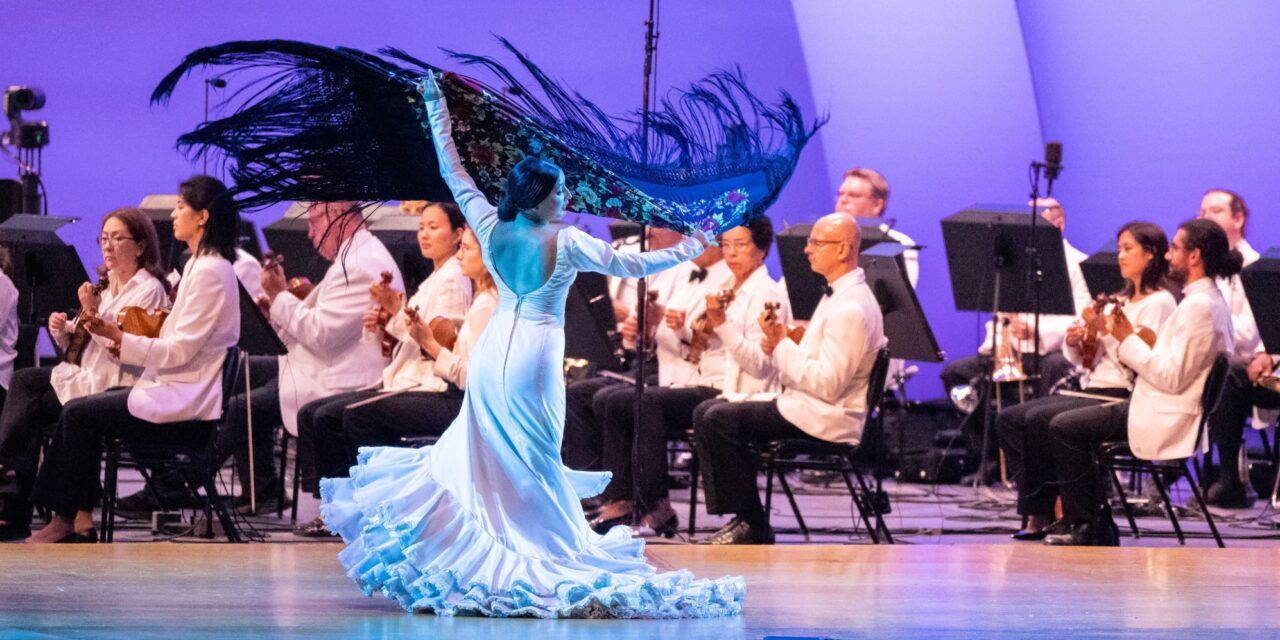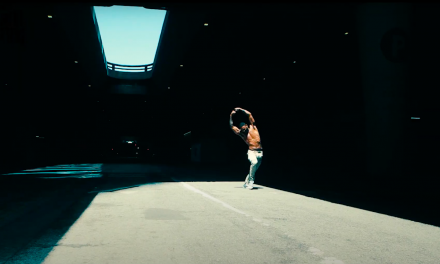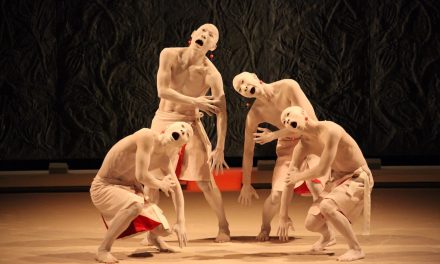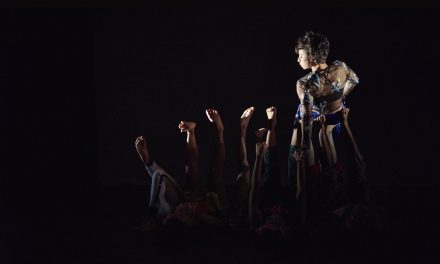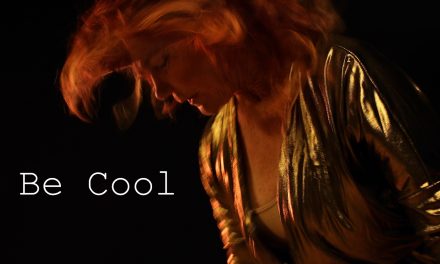The back story on this August 8, 2024 program at the Hollywood Bowl is as intriguing as the stellar performance by Los Angeles Philharmonic conducted by François López-Ferrer, with guest violinist Blake Pouliot and the New York-based dance company Flamenco Vivo Carlota Santana (FVCS). Emilio Ochando, the Valencian born choreographer/dancer, led the FVCS dancers Fanny Ara, Lorena Franco, Madison Olguin, Rebeca Tomas, Adrian Domínguez, Fernando Jiménez, Alberto Selles, and Yoel Vargas with such finesse they matched the musicality of the orchestra; their footwork and castanets were as precise; they anchored the phrasing while providing a sweeping grandeur and excitement.
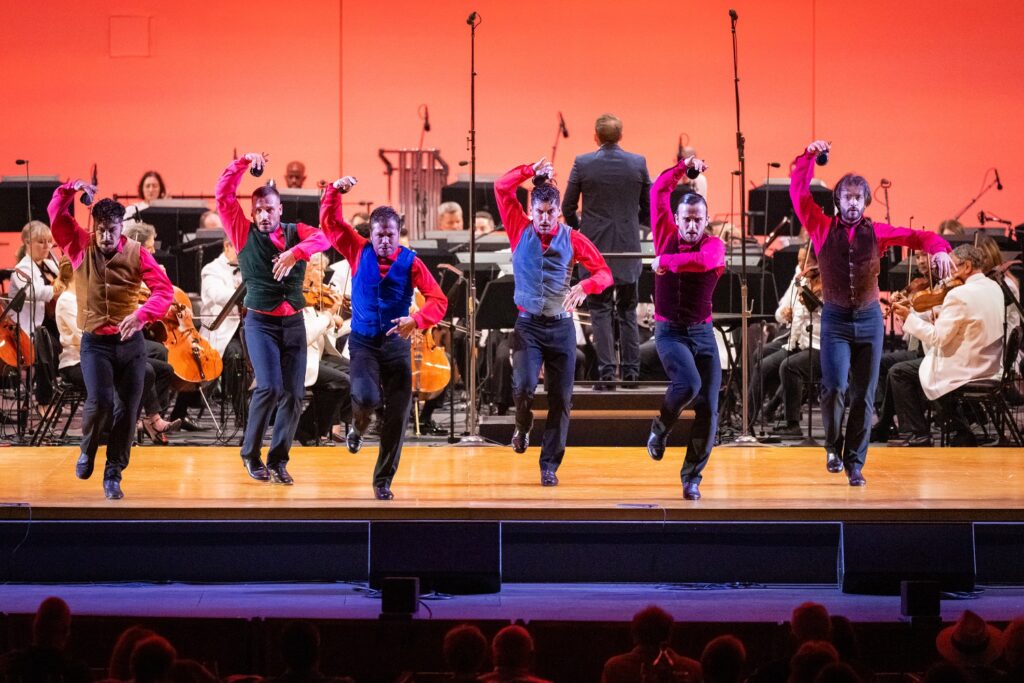
Symphonic Tango and Flamenco – Members of Flamenco Vivo Carlota Santana with the LA Philharmonic – Photo by Elizabeth Asher, provided courtesy of the LA Phil.
The program included Manuel De Falla’s “The Three Cornered Hat, Suite No. 2”, featuring FVCS, Pouliot soloist in Astor Piazzolla’s “The Four Seasons of Buenos Aires”, Claude Debussy’s “Ibería”, and closing with Maurice Ravel’s “Bolero” with FVCS. For “The Three Cornered Hat”, FVCS swirled in groups and duets, suggesting the flow of people in a small town. The men leapt with both knees bent and lunged like panthers in the style of The Great Antonio. Ochando honored the joyous, sharp jumps and foot twists of the jota, the Basque folk song adapted by De Falla. We feel the ardor of the artists, rather than nuance of the characters in Pedro Antonio de Alarcón’s story that inspired the ballet, notably the lecherous civil servant who wears a three cornered hat. The Farruca, traditionally performed as a male flamenco solo, is equally woven into the ensemble. When Ochando grabs Franco by the waist, he cinches the erotic gist of the “Three Cornered Hat”, as though to say…”Need we say more?”
We can thank de Falla for bringing flamenco to the attention of the global music community. Until 1922 when the composer Falla and the writer Garcia Lorca held a flamenco cante festival in Granada, few outside Spain were curious about this sophisticated art. Once Sergei Diaghilev had commissioned de Falla to write the score for “The Three Corners Hat”, he went to Spain to recruit a flamenco dancer to teach the dancers of the Ballets Russes and perform the central solo. Their flamenco choice, Felix, turned out to be more than they could handle. “The Three Cornered Hat” premiered in 1919 in London, only after Felix “El Loco” was pulled from the production and sequestered in an asylum.
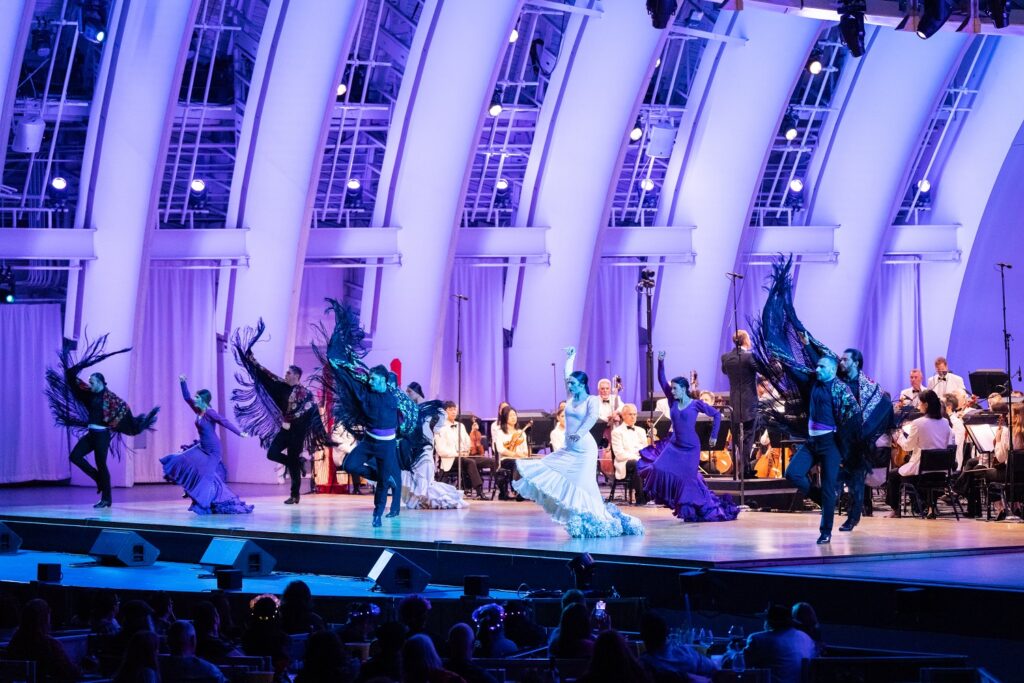
Symphonic Tango & Flamenco – Flamenco Vivo Carlota Santana with LA Philharmonic in “Bolero” – Photo by Elizabeth Asher, provided courtesy of the LA Phil.
For “Bolero”, When Ara made her calm, regal entrance in a white bata de cola (skirts with long trains) the audience gasped. The whole cast twirled black, splashed with color, mantons (large shawls) with the fringe spinning in the light. Departing from the original “Bolero”, a soloist with an ensemble as initiated by Ida Rubenstein and then adapted by Maurice Bejart, Rafael Aguilar, and others, Ochando highlights the ensemble. Dancers break away to dance alone, to flip their bata or manton, arch their backs, and then return to the fold, affirming a statement that we are all one.
The relentless rhythm of “Bolero” serves as a catalyst for Ochando’s choreographic variations. Among the inventions by flamencos are slow subidas (a slow rise in intensity, volume and speed, usually over the course of a minute or less). Did the flamenca subida inspire “Bolero”? No. Some say he was inspired by the mechanical sound of his father’s factory!
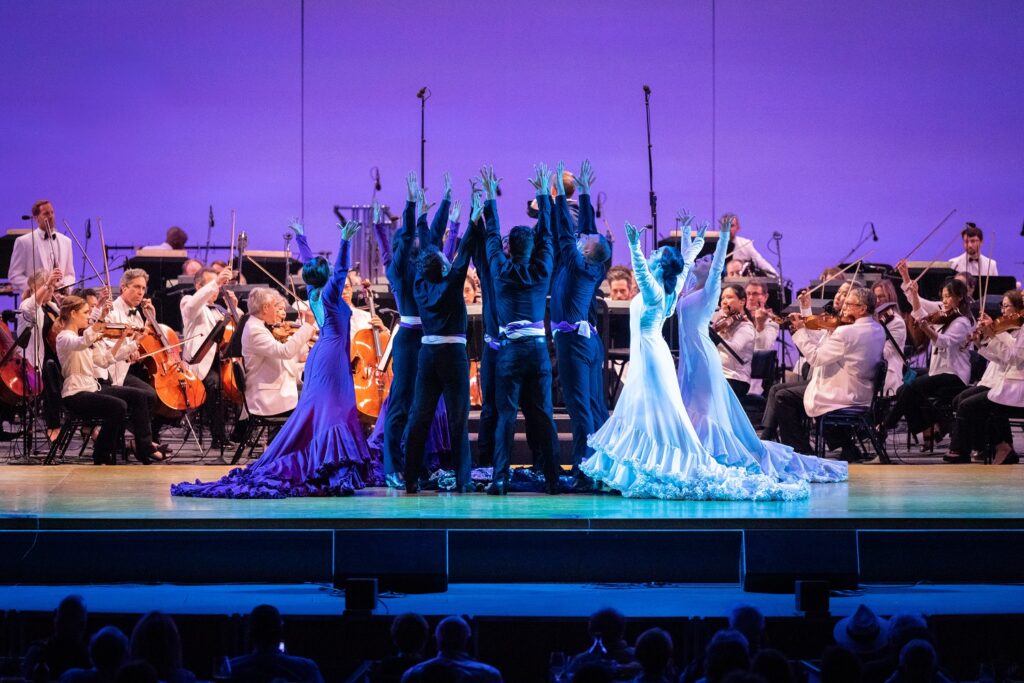
Symphonic Tango & Flamenco – Flamenco Vivo Carlota Santana with LA Philharmonic in “Bolero” – Photo by Elizabeth Asher, provided courtesy of the LA Phil.
The audience at the Hollywood Bowl have two choices: grab a seat near the stage to experience the heat of the dance or join the 15,000 others who bounce their eyes between the miniatures on the stage and the projected performance on 4 side screens.. For the orchestra only works – “Iberia” and “Four Seasons of Buenos Aires”, the screen projections were fascinating. Presumably, an expert followed the scores to assist the camera switcher and operators. Dance companies with opportunities to perform in arenas could adopt this custom of assigning someone to sit with the camera switchers to align the choreography with the close-ups. By prepping the cameras as they would the lighting crew, the dance companies can effectively make two shows – a dance for the stage and a dance for the camera.
Carlota Santana formed Flamenco Vivo in 1983 in New York City with Roberto Lorca, to promote flamenco as a living art form and a vital part of Hispanic heritage. True to that mission, tradition dances with innovation as the through line, knot, and bow of this program. Would Lorca agree? What would De Falla & Ravel, Diaghilev and Ida Rubenstein think of this evening? Would they admire the clarity of the sound, intensity, and the freedom of expression? What would they notice?
That’s a review I would love to read.
To learn more about Flamenco Vivo Carlota Santana, please visit their website.
To lean more about the Los Angeles Philharmonic, please visit their website.
To learn more about the Hollywood Bowl, please visit their website.
Written by Deirdre Towers for LA Dance Chronicle.
Featured image: Symphonic Tango & Flamenco – Flamenco Vivo Carlota Santana’s Fanny Ara with LA Philharmonic in “Bolero” – Photo by Elizabeth Asher, provided courtesy of the LA Phil.

